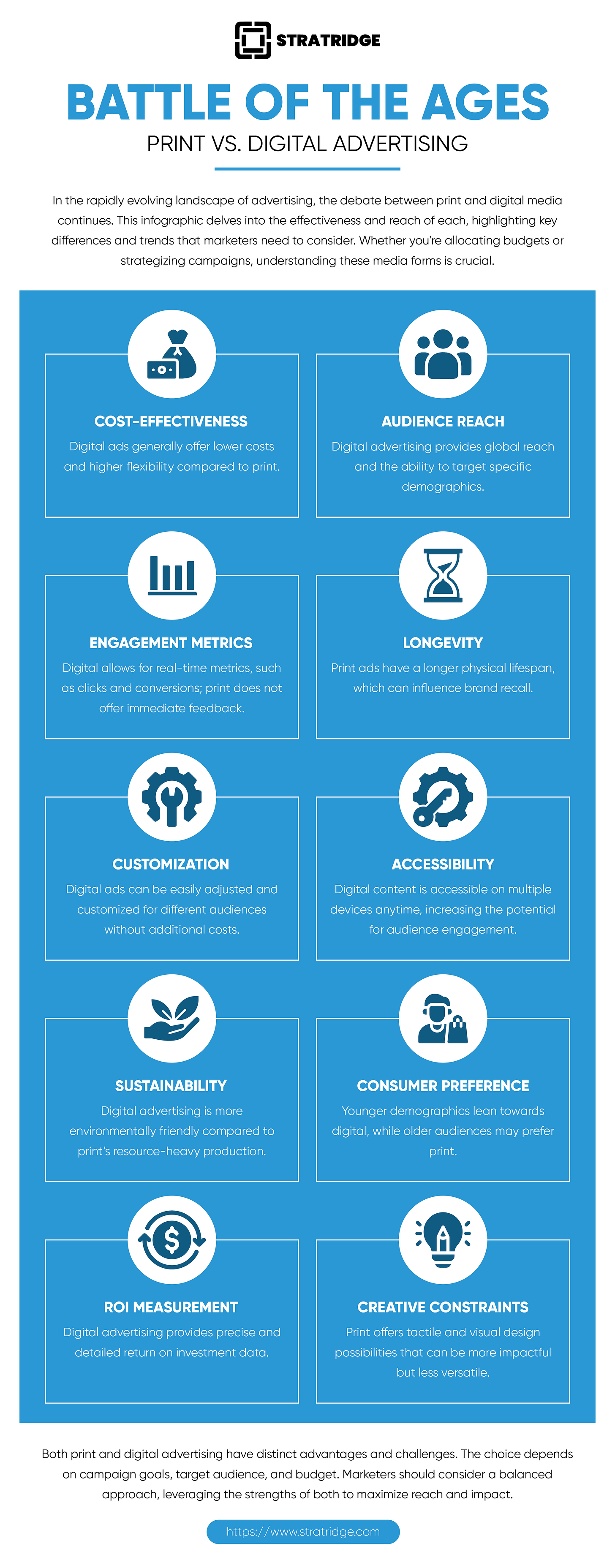In the rapidly evolving landscape of advertising, the debate between print and digital media continues. This infographic delves into the effectiveness and reach of each, highlighting key differences and trends that marketers need to consider. Whether you're allocating budgets or strategizing campaigns, understanding these media forms is crucial.
Cost-Effectiveness: Digital ads generally offer lower costs and higher flexibility compared to print.
Audience Reach: Digital advertising provides global reach and the ability to target specific demographics.
Engagement Metrics: Digital allows for real-time metrics, such as clicks and conversions; print does not offer immediate feedback.
Longevity: Print ads have a longer physical lifespan, which can influence brand recall.
Customization: Digital ads can be easily adjusted and customized for different audiences without additional costs.
Accessibility: Digital content is accessible on multiple devices anytime, increasing the potential for audience engagement.
Sustainability: Digital advertising is more environmentally friendly compared to print’s resource-heavy production.
Consumer Preference: Younger demographics lean towards digital, while older audiences may prefer print.
ROI Measurement: Digital advertising provides precise and detailed return on investment data.
Creative Constraints: Print offers tactile and visual design possibilities that can be more impactful but less versatile.
Both print and digital advertising have distinct advantages and challenges. The choice depends on campaign goals, target audience, and budget. Marketers should consider a balanced approach, leveraging the strengths of both to maximize reach and impact.
For more marketing tips, tutorials, templates, and tricks, please subscribe to https://www.stratridge.com


